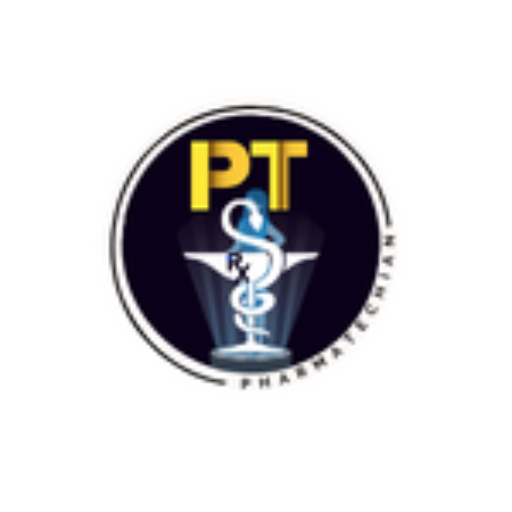
1. Growth and Expansion Strategy of Novartis Pharmaceuticals
Overview:
Novartis Pharmaceuticals, a global healthcare leader, has consistently pursued a strategic growth and expansion approach, focusing on mergers and acquisitions, R&D investments, and market penetration in both developed and emerging markets.
Key Milestones:
- Mergers and Acquisitions: Over the years, Novartis has completed significant mergers and acquisitions, such as acquiring Alcon in 2010 and AveXis in 2018, enhancing its position in eye care and gene therapy, respectively.
- R&D Investments: Novartis invests over $9 billion annually in R&D, making it one of the top spenders in the industry. This commitment has led to the development of groundbreaking therapies, including CAR-T cell therapies and innovative oncology treatments.
- Market Penetration: In emerging markets, particularly India, Novartis has employed strategies such as partnerships with local companies, expanding its generic drug portfolio, and leveraging its global supply chain to increase accessibility and affordability.
Graphical Representation:
2. Innovation and R&D in Novartis Pharmaceuticals
Overview:
Innovation is at the core of Novartis’s success, with a robust R&D pipeline focusing on high-impact areas like oncology, neuroscience, and gene therapy.
Innovation Pipeline:
- Breakthrough Drugs: Novartis has developed several breakthrough drugs, including Kymriah (CAR-T therapy) and Zolgensma (gene therapy for spinal muscular atrophy).
- Technological Advancements: The company is a pioneer in digital therapeutics, utilizing AI to enhance drug discovery and patient care.
- Partnerships: Novartis collaborates with leading research institutions globally, such as its alliance with the University of California, Berkeley, to advance CRISPR-based therapies.
Graphical Representation:
3. Challenges and Regulatory Compliance
Overview:
Navigating the complex regulatory landscape is a significant challenge for Novartis, especially in markets like India, where regulatory requirements are stringent.
Major Challenges:
- Regulatory Compliance: Compliance with varying international regulations, particularly in the Indian market, is complex. Novartis has faced challenges related to drug pricing controls and patent laws.
- Patent Laws: The company has engaged in several high-profile patent disputes in India, including the Glivec patent case, which highlighted the challenges of enforcing patents in markets with strong generic drug sectors.
- International Trade: Novartis must also manage trade regulations and tariffs that affect its global operations.
Graphical Representation:
4. Impact of COVID-19 on Novartis Pharmaceuticals
Overview:
The COVID-19 pandemic significantly impacted the pharmaceutical industry, including Novartis, which adapted by optimizing its operations and accelerating digital transformations.
Adaptation Strategies:
- Operational Adjustments: Novartis shifted to remote working models for its global workforce and rapidly scaled up production of essential medicines.
- Supply Chain Resilience: The company strengthened its supply chain by diversifying suppliers and increasing inventory levels to mitigate disruptions.
- Long-term Effects: The pandemic accelerated Novartis’s adoption of digital tools in clinical trials, enhancing its agility in drug development and patient engagement.
Graphical Representation:
5. Market Penetration and Globalization
Overview:
Novartis has effectively expanded its global footprint by entering new markets and optimizing its operations in established regions.
Market Expansion Strategies:
- Emerging Markets: In regions like India, China, and Latin America, Novartis has introduced affordable generic medicines and partnered with local companies to increase market penetration.
- Developed Markets: In the U.S. and Europe, Novartis has focused on launching high-margin specialty drugs, such as those in oncology and immunology.
- Barriers to Entry: The company has navigated challenges such as regulatory barriers and competition by leveraging its strong R&D capabilities and global supply chain.
Graphical Representation:
6. Corporate Social Responsibility (CSR) and Ethical Practices
Overview:
Novartis is committed to CSR and ethical practices, focusing on public health, education, and environmental sustainability.
CSR Initiatives:
- Public Health: Novartis has launched programs like Novartis Access, which provides affordable medicines to low-income countries.
- Education: The company invests in health education initiatives and partners with global health organizations to address healthcare disparities.
- Environmental Sustainability: Novartis aims to achieve carbon neutrality by 2025, with ongoing efforts in energy efficiency and sustainable sourcing.
Graphical Representation:
7. Supply Chain Management and Operational Efficiency
Overview:
Supply chain management is a critical component of Novartis’s operational efficiency, ensuring timely delivery and quality control across its global operations.
Key Strategies:
- Supply Chain Optimization: Novartis employs advanced analytics and AI to forecast demand and optimize inventory levels.
- Cost Management: The company has reduced costs by consolidating its manufacturing facilities and streamlining its logistics network.
- Quality Standards: Novartis maintains stringent quality control measures, with regular audits and compliance checks across its supply chain.
Graphical Representation:
8. Competitor Analysis and Market Position
Overview:
Novartis is a leader in the global pharmaceutical industry, competing with other giants like Pfizer, Roche, and Merck.
Comparative Analysis:
- Market Position: Novartis ranks among the top 10 pharmaceutical companies globally, with a strong presence in oncology, immunology, and generics.
- Product Portfolio: Compared to its competitors, Novartis has a diversified portfolio with strengths in innovative therapies and biosimilars.
- Pricing Strategies: The company employs a competitive pricing strategy, particularly in emerging markets, to capture market share.
Graphical Representation:
9. Sustainability and Environmental Impact
Overview:
Sustainability is a core focus for Novartis, with initiatives aimed at reducing its environmental footprint.
Sustainability Efforts:
- Waste Management: Novartis has implemented zero-waste policies in several of its facilities and focuses on recycling and responsible waste disposal.
- Carbon Footprint: The company is on track to achieve carbon neutrality by 2025, with ongoing investments in renewable energy and energy-efficient technologies.
- Sustainable Sourcing: Novartis prioritizes sustainable sourcing for its raw materials, ensuring ethical and environmentally friendly practices.
Graphical Representation:
10. Financial Performance and Investment Strategies
Overview:
Novartis’s financial performance has been strong, supported by strategic investments and a focus on high-growth areas like oncology and gene therapy.
Financial Metrics:
- Revenue Growth: Novartis’s revenue has grown steadily, driven by the success of its innovative drugs and expansion into emerging markets.
- Profitability: The company maintains robust profit margins, thanks to its high-margin specialty drugs and cost management strategies.
- Capital Allocation: Novartis allocates significant capital to R&D and strategic acquisitions, ensuring a steady pipeline of new products.
Graphical Representation:
11. Problems and Challenges
Overview:
Despite its successes, Novartis faces several challenges that could impact its future growth.
Key Challenges:
- Regulatory Hurdles: Compliance with diverse regulatory requirements across markets remains a major challenge.
- Patent Expirations: As patents on blockbuster drugs expire, Novartis faces pressure to innovate and replace lost revenue.
- Competition: Intense competition from other pharmaceutical giants and generic drug manufacturers poses a constant threat to market share.
Graphical Representation:
12. Future Plans
Overview:
Novartis has ambitious plans for the future, focusing on expanding its global footprint and continuing its leadership in innovation.
Strategic Goals:
- Geographic Expansion: Novartis plans to further penetrate emerging markets, particularly in Asia and Africa.
- Innovation: The company will continue to invest heavily in R&D, with a focus on gene therapy, oncology, and digital health.
- Sustainability: Novartis aims to lead the industry in sustainability, with goals like achieving carbon neutrality and zero waste.
Graphical Representation:
13. Adoption of Artificial Intelligence and Blockchain
Overview:
Novartis is at the forefront of adopting cutting-edge technologies like AI and blockchain to enhance its operations and R&D.
Technological Adoption:
- Artificial Intelligence: Novartis utilizes AI in drug discovery, patient care, and clinical trials, improving efficiency and outcomes.
- Blockchain: The company is exploring blockchain technology for supply chain transparency and ensuring the authenticity of its products.
Graphical Representation:
Author




